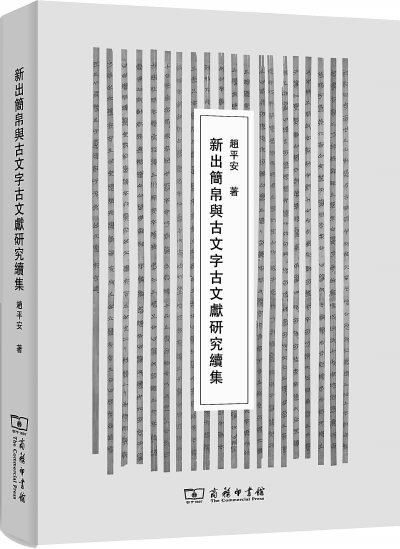Chinese palaeography reaches new heights

Studies on Newly Unearthed Bamboo Slips and Silk Writings and on Ancient Writing Systems and Literatures—Continued Edition
Author: Zhao Ping’an
Publisher: The Commercial Press
Zhao Ping’an, a professor from the Department of History at Tsinghua University, has spent over a dozen years studying Chinese palaeography, beginning with the written languages of the Qin and Han dynasties. Based on years of hard work and a large number of newly unearthed materials, he broadens his scope and traces the languages back to the pre-Qin Period, even to the Western Zhou Dynasty (1046-771 BCE) and the Shang Dynasty (c.1600-c.1046 BCE). Zhao has made great achievements during this process.
Chinese written language has a long history, tracing through the Shang Dynasty, the Western Zhou Dynasty, the Spring and Autumn Period (770-476 BCE), the Warring States Period (476-221 BCE), up to the Qin Dynasty (221-206 BCE), when multiple written language systems were unified. The entire history of ancient Chinese written languages can be divided into several stages. The mission of palaeographical studies is to identify each character based on the evolution rules of these ancient written languages, and illustrate the characters of these ancient written languages in terms of formation, pronunciation and meaning in each stage. Identifying the written languages since the Shang Dynasty would be a great achievement of palaeographical studies in China.
Most scholars began palaeographical studies by studying the inscriptions on bones or tortoise shells of the Shang Dynasty. This strategy has its historical origins. Chinese palaeographical studies began from the Western Han Dynasty (206 BCE-25 AD) and made great achievements in the Song Dynasty (960-1279). Scholars in the Song Dynasty paid great attention to the bronze vessels, and the most notable achievement of palaeography was the study of inscriptions on these bronze vessels. This tendency continued even in the Qing Dynasty. Most scholars interpreted these inscriptions by referring to the Analytical Dictionary of Characters which was written by Xu Shen in the Eastern Han Dynasty. These long articles of the Western Zhou Dynasty, written in the ancient languages, received a lot of attention.
The discovery and identification of inscriptions on bones or tortoise shells of the Shang Dynasty since 1899 broadened the horizon of palaeographical studies. Studying ancient written languages by beginning with this newly discovered written language became a trend. However, this written language was used in the Shang Dynasty, about a thousand of years earlier than that used in the Qin and Han dynasties. Studies on the written languages between the Shang Dynasty and the Qin-Han Period were hindered by the lack of materials.
The discovery of written languages on bamboo slips and silks in the 1970s provided new opportunities for Chinese palaeography. Zhao is one of the scholars on top of this trend.
(edited by CHEN ALONG)
